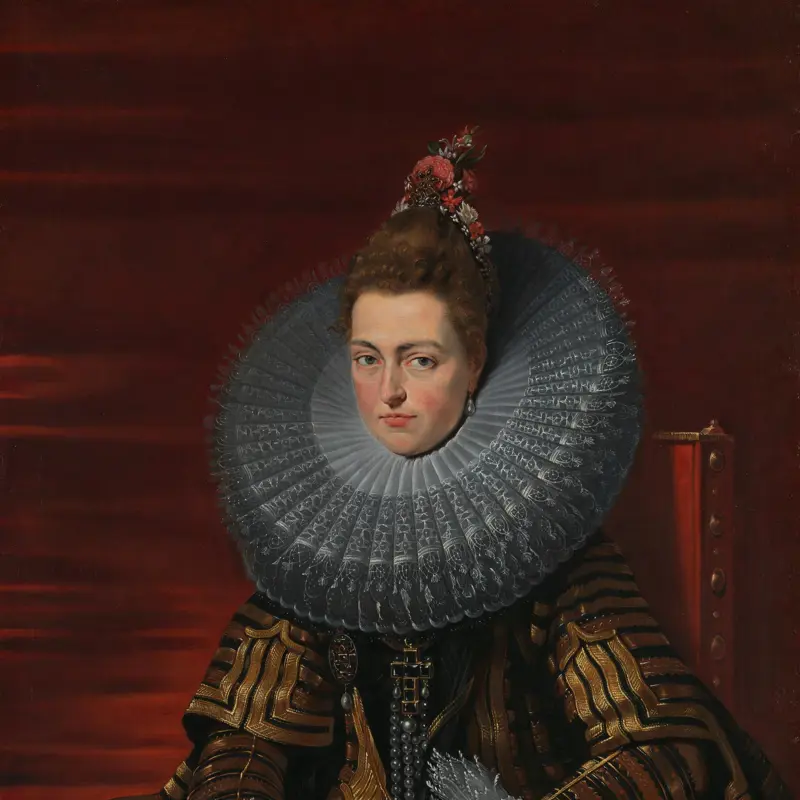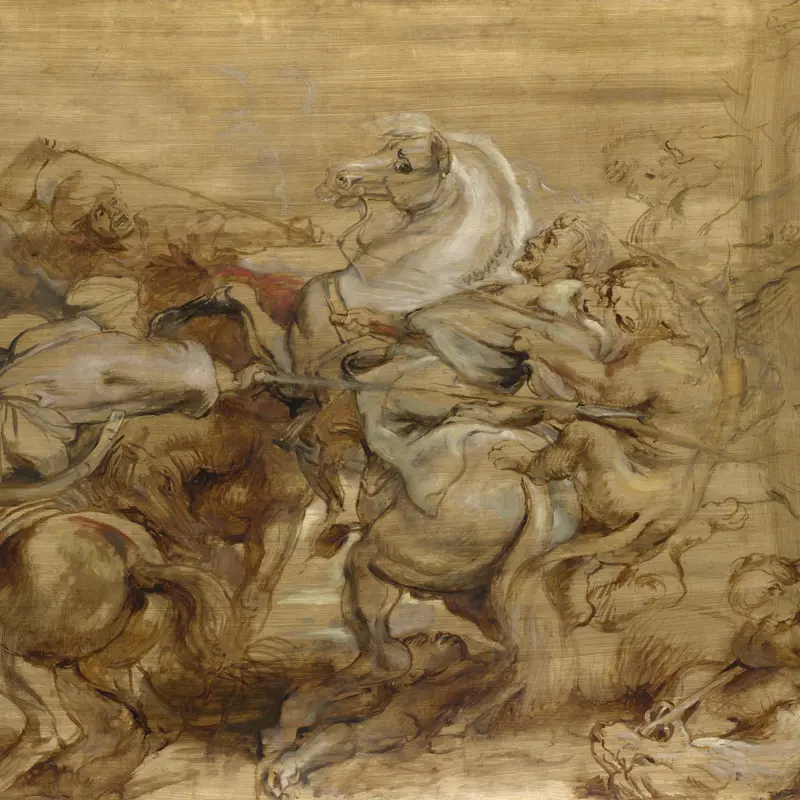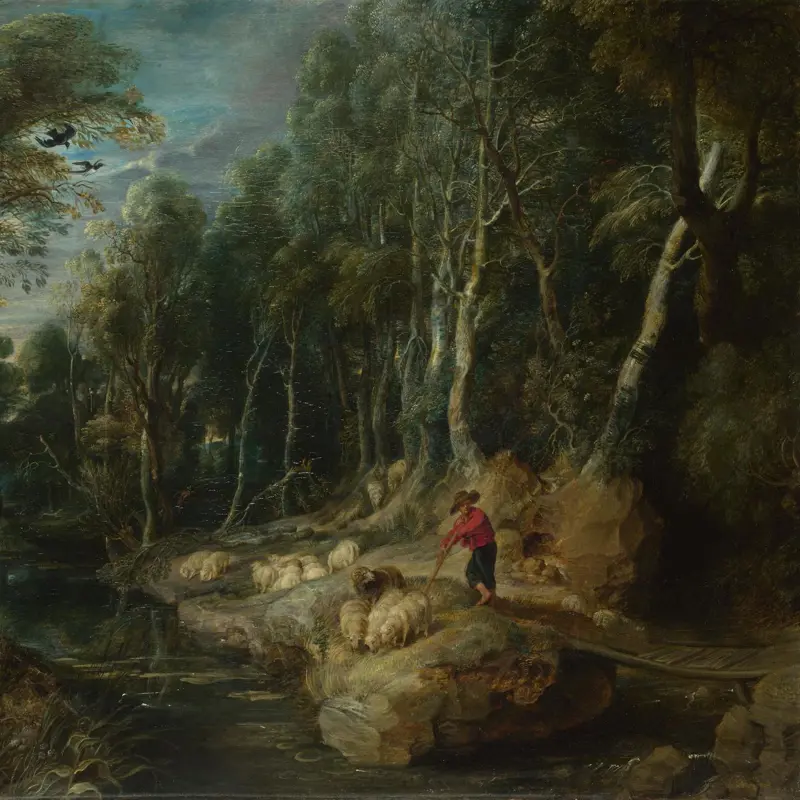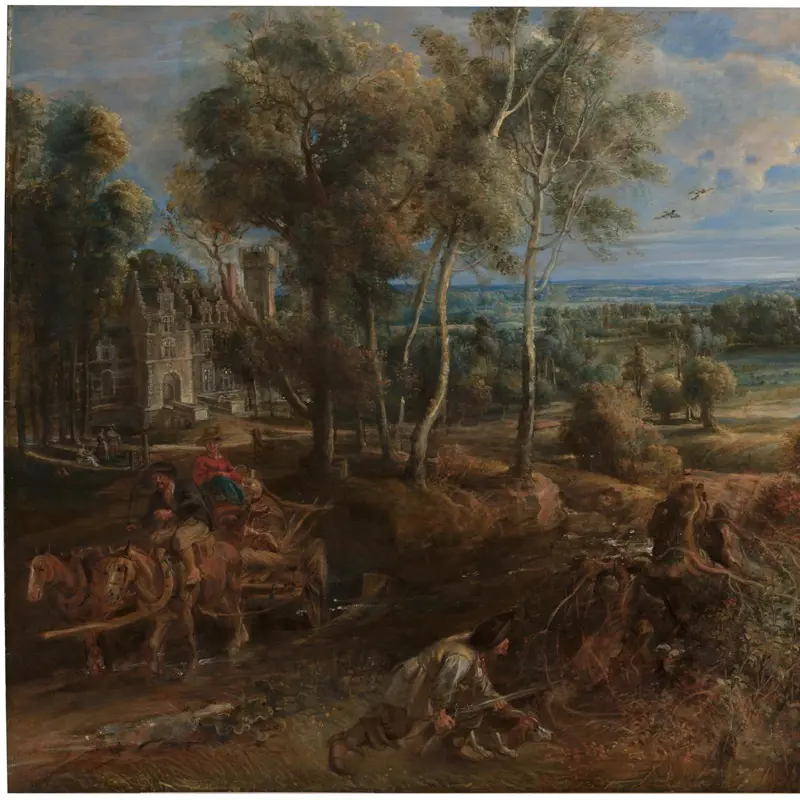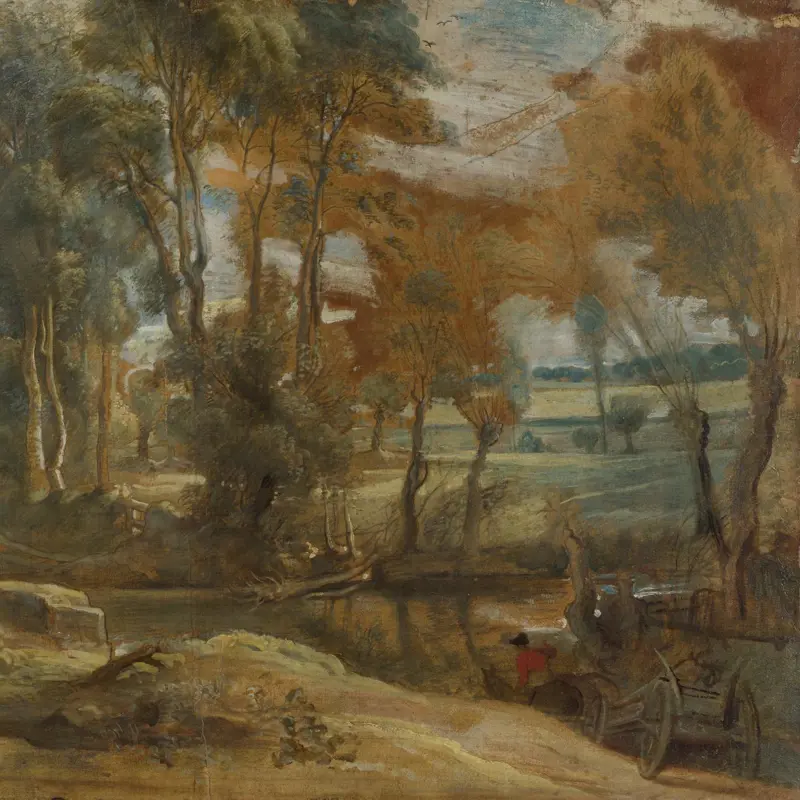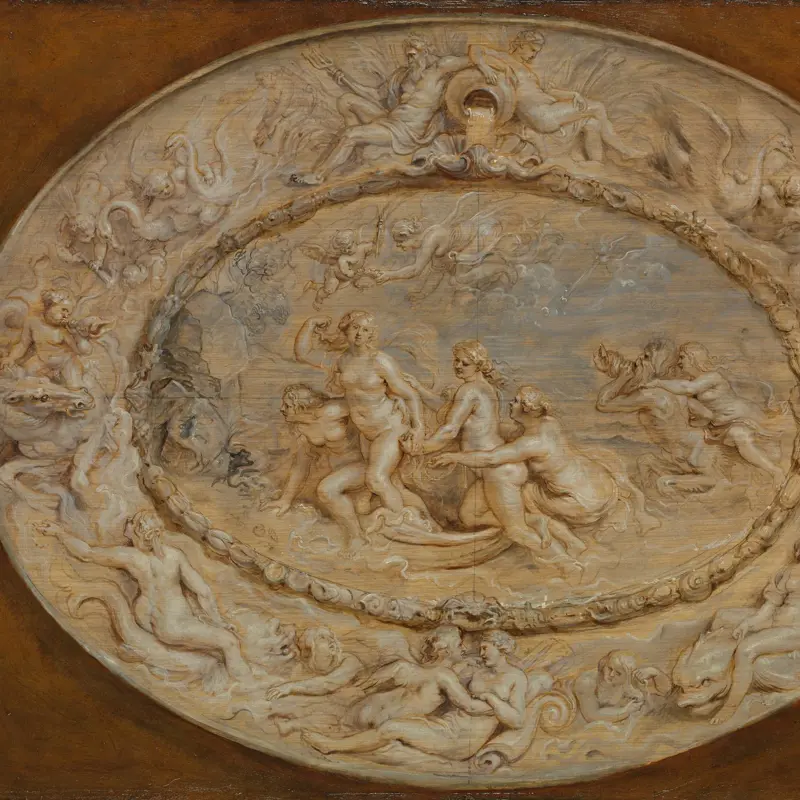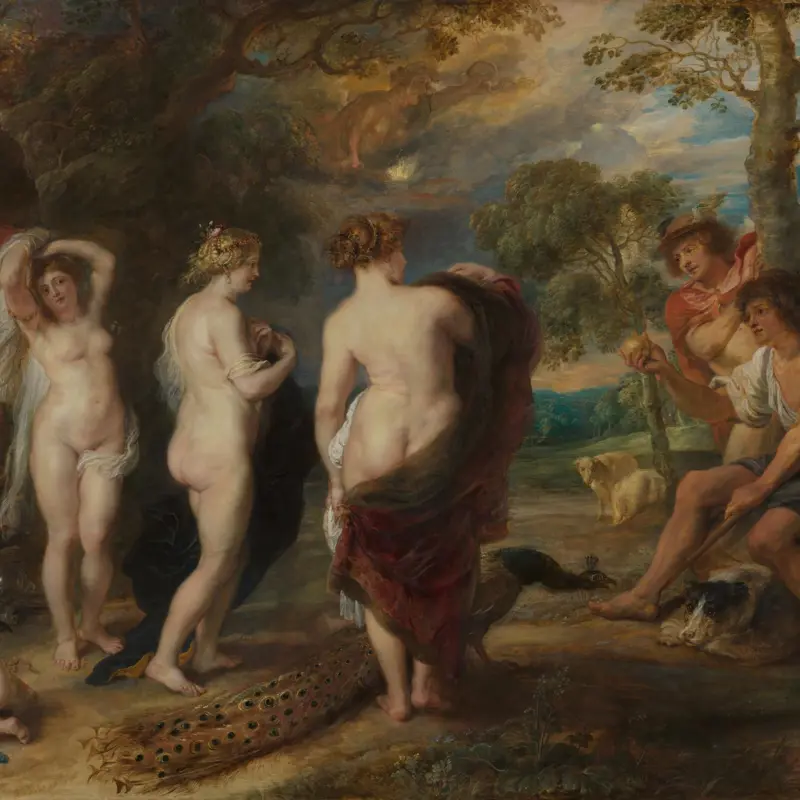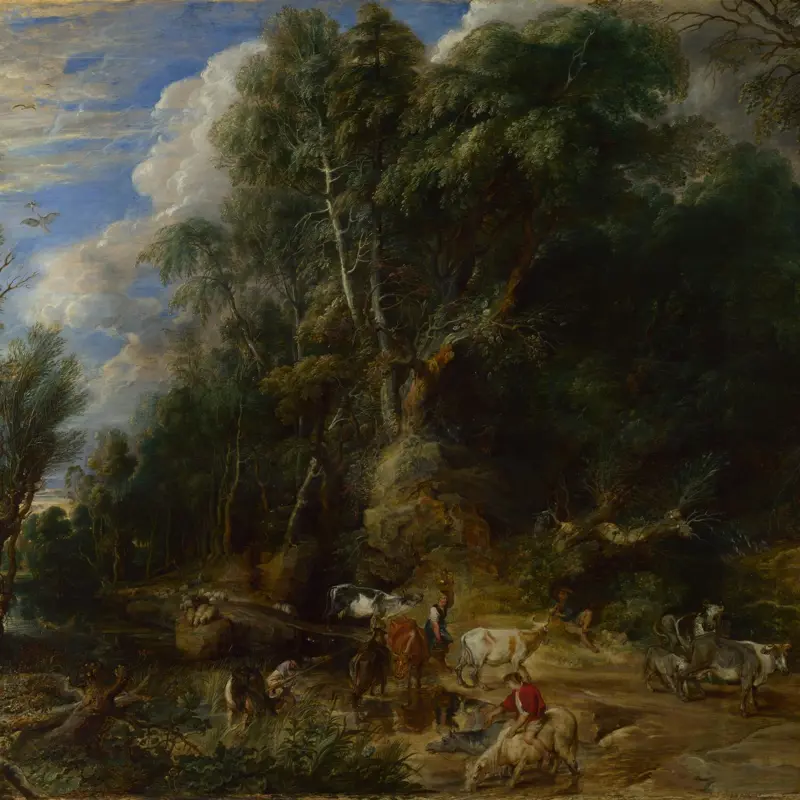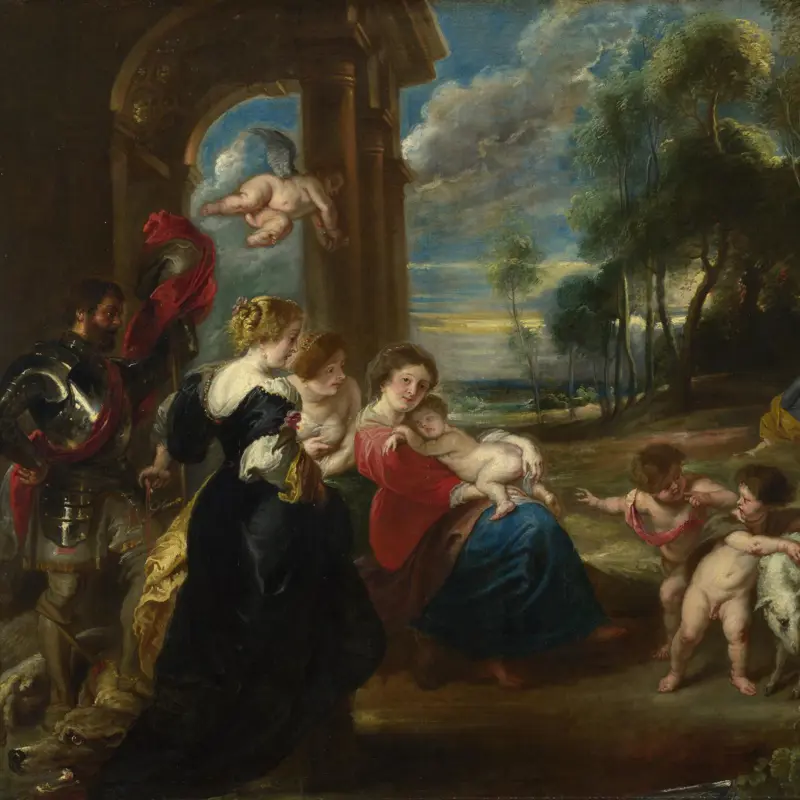Studio of Peter Paul Rubens, 'Portrait of the Archduke Albert', about 1615
About the work
Overview
Against a deep red background, the Archduke Albert of Austria turns towards us with a direct but gentle gaze. His left hand is on the pommel of his sword but his pose is relaxed and unintimidating. His right arm is turned towards us, showing off the delicate pattern of his sleeve and the lace ruffle at his wrist. Albert was part of the Habsburg family, one of the powerful reigning dynasties in Europe at the time, and some of his features are unmistakably Habsburg: long cheeks, an aquiline nose and a high brow.
Philip II of Spain appointed Albert as Governor of the Spanish Netherlands, and he took on the task of subduing the rebellious Protestants in the seven Northern Provinces. Shortly afterwards he married Isabella, Philip’s favourite daughter. The couple held joint sovereignty of the Netherlands until Albert’s death in 1621.
Key facts
Details
- Full title
- Portrait of the Archduke Albert
- Artist
- Studio of Peter Paul Rubens
- Artist dates
- 1577 - 1640
- Part of the series
- The Archduke Albert and the Infanta Isabella
- Date made
- About 1615
- Medium and support
- Oil on canvas
- Dimensions
- 122 × 89 cm
- Acquisition credit
- Bequeathed by Richard C. Jackson, 1923
- Inventory number
- NG3818
- Location
- Not on display
- Collection
- Main Collection
Provenance
Additional information
Text extracted from the ‘Provenance’ section of the catalogue entry in Gregory Martin, ‘National Gallery Catalogues: The Flemish School: circa 1600–circa 1900’, London 1986; for further information, see the full catalogue entry.
Exhibition history
-
2017Rubens - Princely PortraitsMusée du Luxembourg3 October 2017 - 15 January 2018
-
2018The Eighty Years WarRijksmuseum Amsterdam12 October 2018 - 20 January 2019
Bibliography
-
1986Martin, Gregory, National Gallery Catalogues: The Flemish School, circa 1600 - circa 1900, London 1986
-
2001
C. Baker and T. Henry, The National Gallery: Complete Illustrated Catalogue, London 2001
About this record
If you know more about this work or have spotted an error, please contact us. Please note that exhibition histories are listed from 2009 onwards. Bibliographies may not be complete; more comprehensive information is available in the National Gallery Library.
Images
About the series: The Archduke Albert and the Infanta Isabella

Overview
These two portraits were made as pendants, or companion pieces, and would have hung side by side. They show the Archduke Albert of Austria and the Infanta (or Princess) Isabella, joint sovereigns of the Seventeen Provinces of the Spanish Netherlands. The position was granted to them by Isabella’s father, Philip II of Spain, on their marriage in 1599.
The Southern Provinces (Flanders) were, like Spain, Roman Catholic, but the Northern Provinces were predominantly Protestant and had fought hard for independence. Albert and Isabella were, in effect, rulers of Flanders only, but they had a strong sense of duty to the people as well as to the Spanish crown, and set out to create a sense of national identity. They were patrons of the arts and made Rubens court painter.
The portraits are likely to be studio copies rather than by Rubens himself. They were possibly made after two originals which are now lost but which are known through prints made after them.


